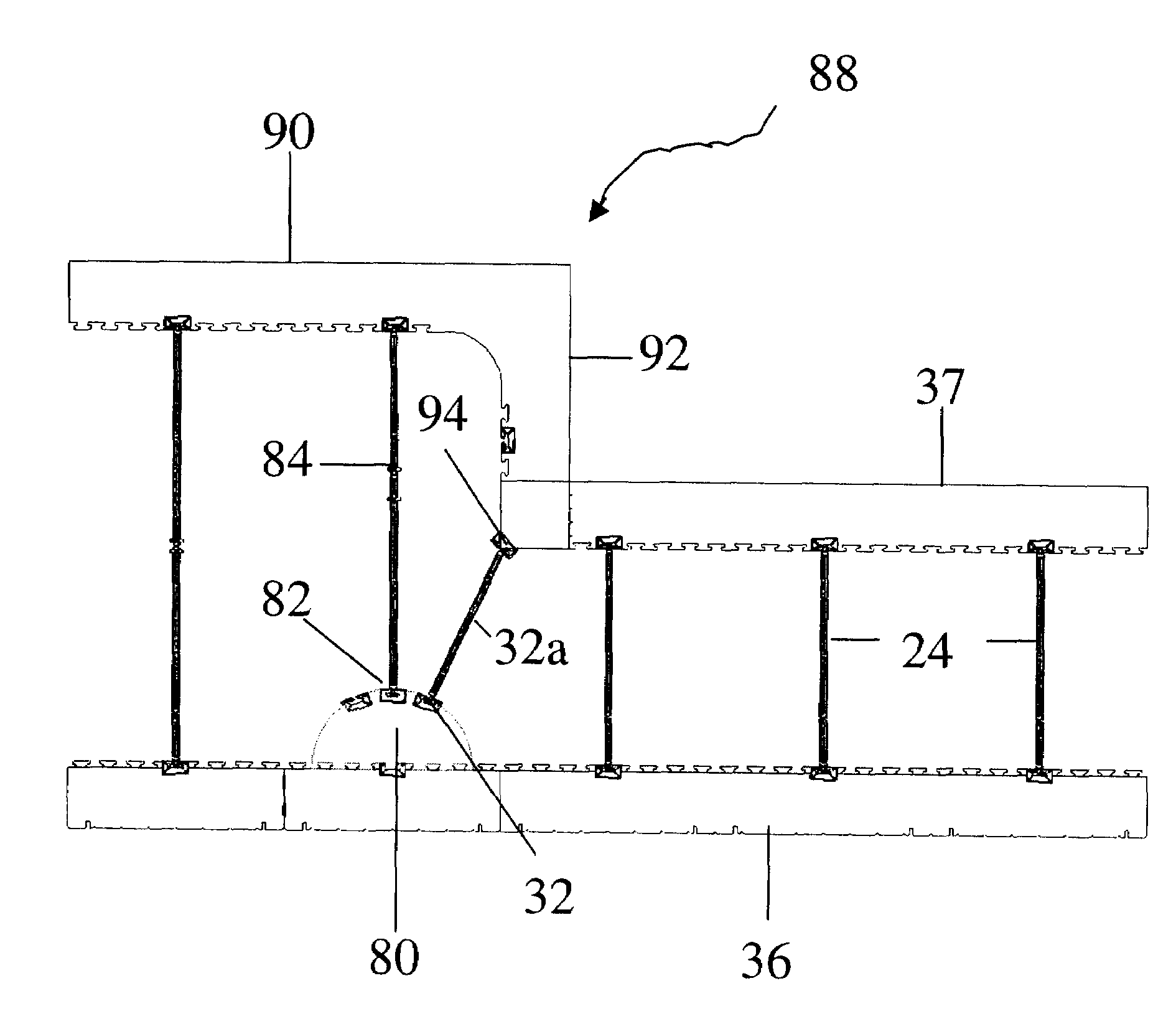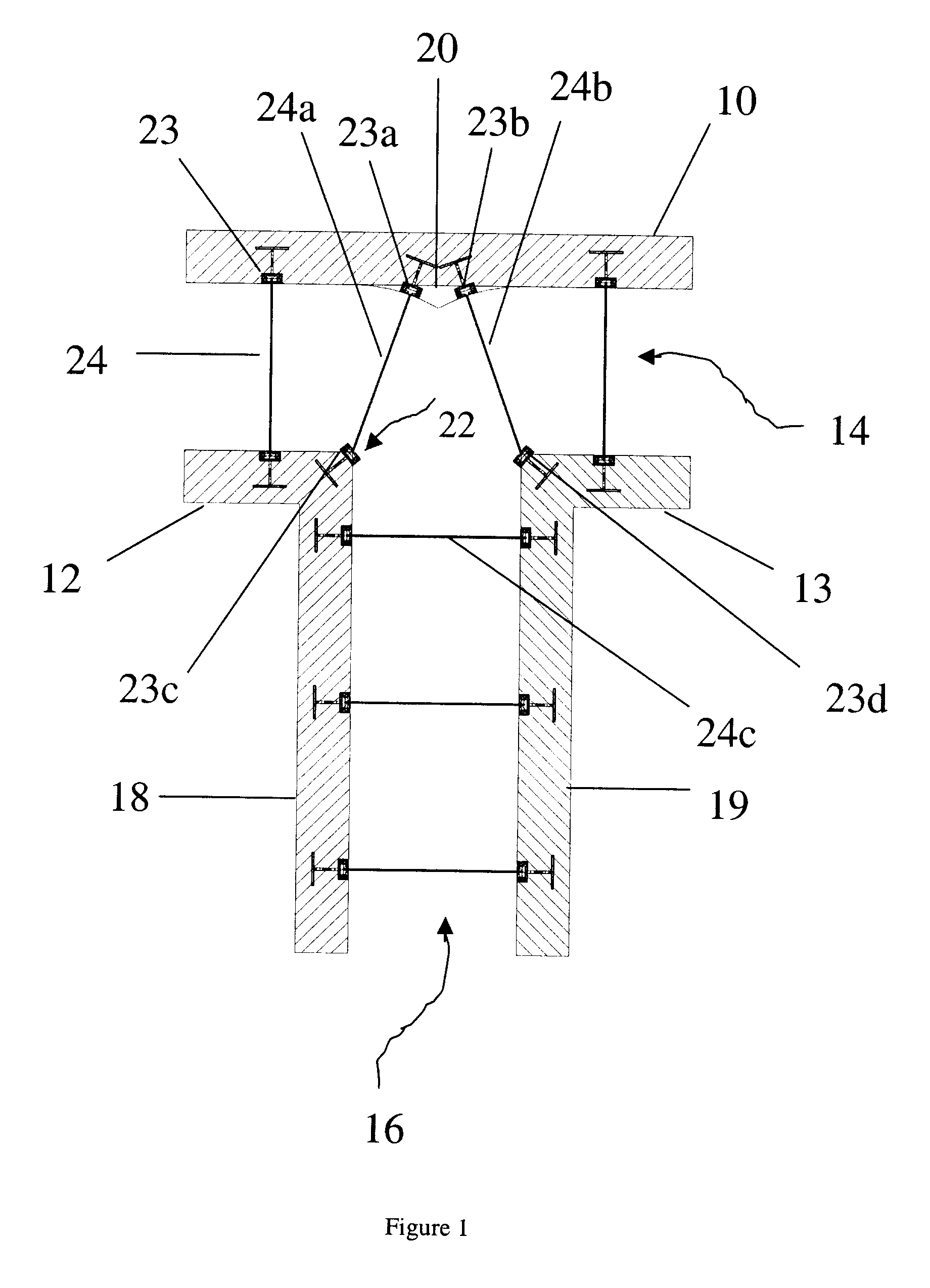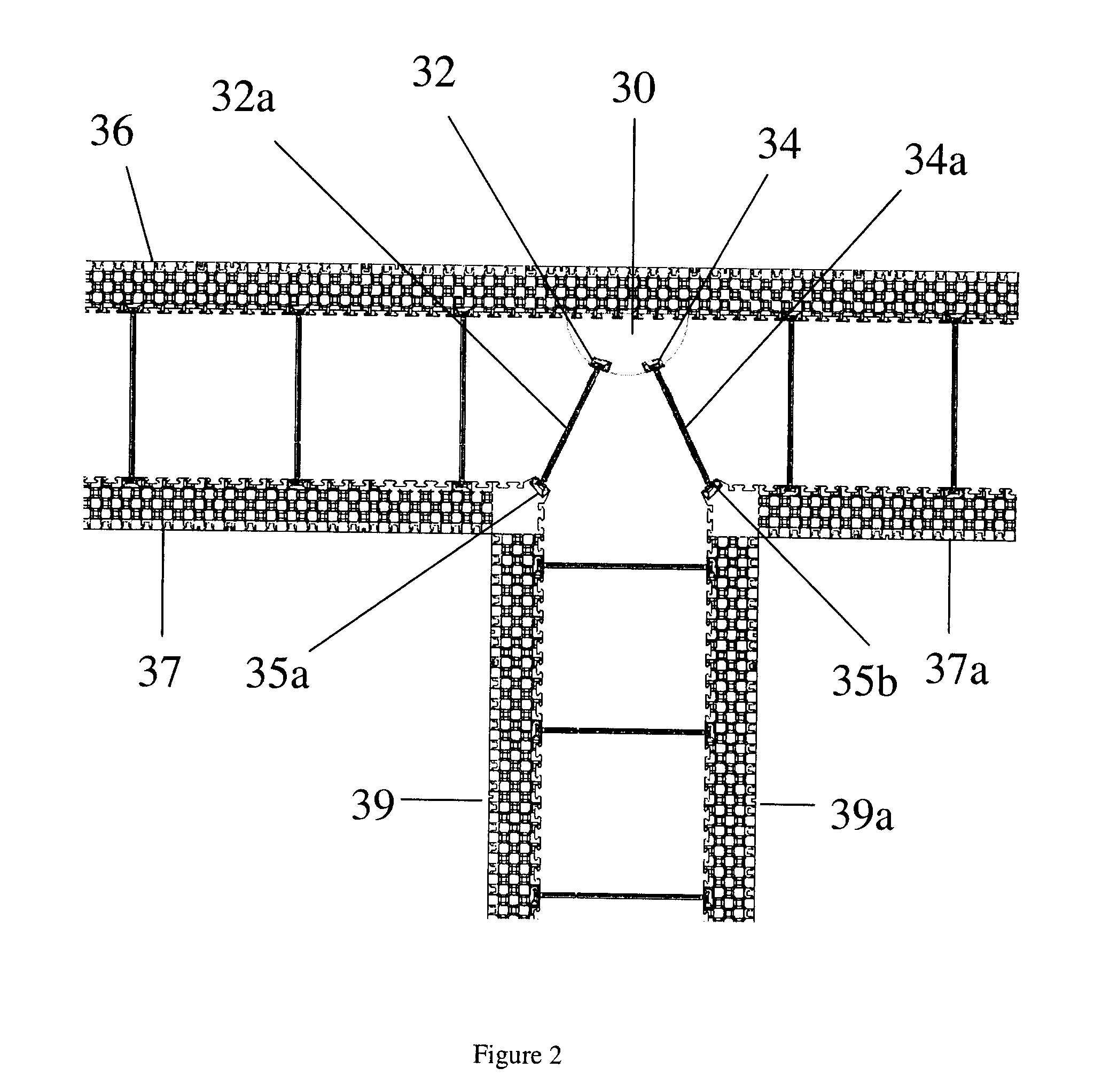Insulated concrete form panel reinforcement
a technology of insulated concrete and form panels, which is applied in the direction of shaping building parts, building components, walls, etc., can solve the problems of inability to meet the requirements of a high-vulcanity location, the support of t-walls or columns is less well known in the past, and the location of high vulnerability of traditional spacers used in other locations in the icf system is not particularly suitabl
- Summary
- Abstract
- Description
- Claims
- Application Information
AI Technical Summary
Benefits of technology
Problems solved by technology
Method used
Image
Examples
Embodiment Construction
[0039]Generally, the present invention provides an ICF system having a reinforcement at a T-wall intersection. More particularly, the present invention provides an insulated concrete form comprising a main panel, a first opposing panel opposite the main panel, a spacer having first and second ends for maintaining a fixed spacing between the main panel and the first opposing panel, a reinforcement on the main panel for stiffening the main panel, a spacer retention element integrated in the reinforcement for securing the first end of the spacer to the main panel, and a first opposing spacer retention element in the first opposing panel for securing the second end of the spacer to the first opposing panel.
[0040]A panel having a reinforcement connected thereto in an ICF according to the present invention is referred to herein as a reinforced panel. The reinforced panel can be used at any location along an ICF system. The reinforced panel is particularly suitable at locations vulnerable ...
PUM
| Property | Measurement | Unit |
|---|---|---|
| angle | aaaaa | aaaaa |
| angle | aaaaa | aaaaa |
| angle | aaaaa | aaaaa |
Abstract
Description
Claims
Application Information
 Login to View More
Login to View More - R&D
- Intellectual Property
- Life Sciences
- Materials
- Tech Scout
- Unparalleled Data Quality
- Higher Quality Content
- 60% Fewer Hallucinations
Browse by: Latest US Patents, China's latest patents, Technical Efficacy Thesaurus, Application Domain, Technology Topic, Popular Technical Reports.
© 2025 PatSnap. All rights reserved.Legal|Privacy policy|Modern Slavery Act Transparency Statement|Sitemap|About US| Contact US: help@patsnap.com



